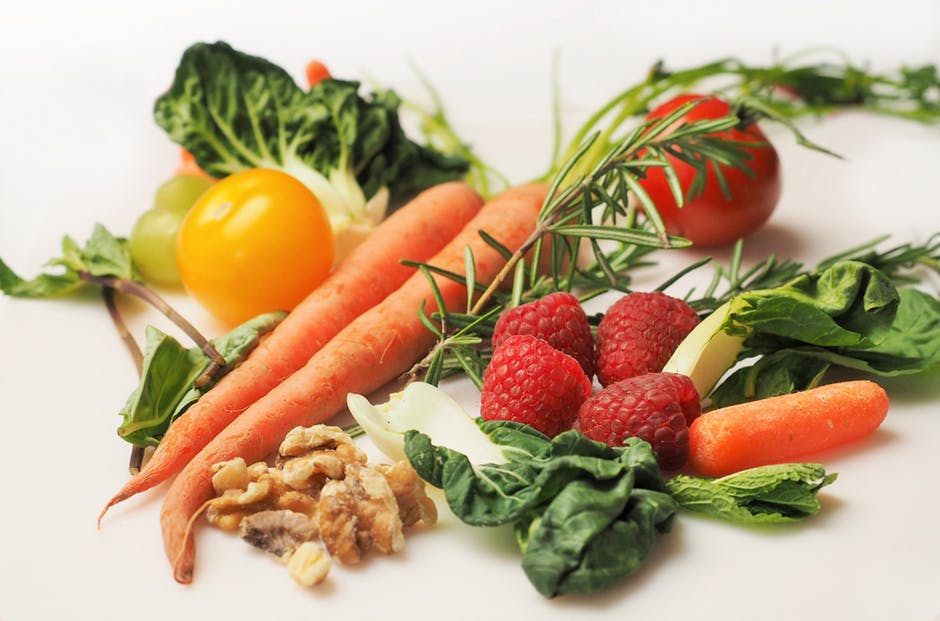Nutricosmetics and Your Patients
Looking for creative ideas to get your patients tuned into the connection between diet and healthier skin? Take a look at the #DermTipTuesday article by Dr. Carter-Snell as she introduces her patients to the concept of nutricosmetics and specific foods that are scientifically proven to benefit the skin. Next Steps in Derm looks at Dr. Carter-Snell’s and a few other evidence-based sources to tap into nutrition and the skin.
A Fascinating Take on Nutricosmetics and The Science of Eating for Healthier Skin
Skin-aging is a process influenced by intrinsic, extrinsic and lifestyle factors. This study suggests diet and nutrition play a key role in aging and the appearance of the skin.
Enter nutricosmetics, have you heard of them? Along the same lines as Dr. Carter-Snell’s article, nutricosmetics is the complementary use of diet and nutrition and/or nutritional supplements–combined with the science of cosmetics–to enhance the skin. Currently used abroad, these nutritional supplements are not currently approved by the Food and Drug Administration in the US. For this post, we reviewed #DermTipTuesday and other evidence-based research regarding certain foods and their nutritional benefits to the skin. For useful insights regarding this topic, check out the manuscript in American Journal of Clinical Nutrition and the references below.
Advantages of Vitamin C and Vitamin E
Vitamin C and Vitamin E are associated with a reduction in wrinkle appearance and senile dryness
Vitamin C role exerts collagen synthesis, the regeneration process, and wound repair. Located in the second layer of the skin, elastin and collagen work to keep the skin tight, full, and young. Vitamin C and Vitamin E also boast antioxidant properties that protect the skin from photodamage when consumed orally.
Consider citrus fruits high in Vitamin C like lemons, oranges, limes, grapefruits and tomatoes.
To reap the benefits of Vitamin E, suggest nuts, seeds, leafy greens, and vegetable oils to you patients.
Essential Fatty Acid: Linoleic Acid
A diet high in linoleic acid, as well as a lower intake of fat and carbohydrates are show to associate with better skin appearance, a reduction in senile dryness and skin atrophy. As well as high intake of vegetables, legumes and olive oil appeared to be protective against cutaneous actinic damage as well.
After ingestion, linoleic acid is converted to other PUFAs like eicosapentaenoic acid (EPA) and docosahexaenoic acid (DHA). The benefits of EPA and DHA have been studied and shown beneficial in fish oil supplements.
Consider vegetable oils, safflower, grape seed, poppy seed, sunflower and hemp oil . You can also find it in almonds, egg yolks and cocoa butter.
Protein and the Skin
A diet higher in protein is associated with the reduction of wrinkles, decrease in skin fragility and increase in wound healing.
As we know, collagen is replaced very slowly and is made of a fibrous protein. Ingesting protein-rich foods fuel the bodies production of amino acids, an important part of collagen creation process.
Protein-rich foods include low fat, lean meats, poultry, seafood, eggs, beans, cheese, yogurt and milk.
Limiting Carbohydrates
Much like the others, carbohydrates play a role in the appearance of the skin. With carbs, a lower intake boasts wrinkle preventation and skin elasticity.
Sugar can contribute to the breakdown of collagen and elastin molecules through the glycation process. When damaged, gravity takes way and the skin begins to lose volume and thin.
Choose a diet rich with fruits, vegetables, nuts and lean meats.
Evidence-based, Peer-reviewed Literature for Further Reading
A Review of Clinical Trials Conducted With Oral, Multicomponent Dietary Supplements for Improving Photoaged Skin by Jay Birnbaum PhD, Anne Le Moigne, Lisa Dispensa MS RD, and Larry Buchner BA
Nutritional Clinical Studies in Dermatology by Aikaterini I. Liakou MD, et al
Systemic Antioxidants and Skin Health by Gloria Nguyen MD, and Abel Torres MD JD
Diet and Acne Update: Carbohydrates Emerge as the Main Culprit by Shereen N. Mahmood MD and Whitney P. Bowe MD
Dr. Carter-Snell’s references
1. Cosgrove M, Franco O, Granger S, Murray P, Mayes A. Dietary nutrient intakes and skin-aging appearance among middle-aged American women. Am J Clin Nutr. 2007 Oct; 86(4): 1225–1231.
2. Farris P. Cosmeceutical Vitamins: Vitamin C. In: Draelos Z, Dover J, Alam M. Cosmeceuticals. 3rd ed. Canada: Elsevier; 2016:37-42.
3. Chernoff R. Protein and older adults. J Am Coll Nutr. 2004;23(suppl):627S–630S.
4. Green B. Antiaging Benefit Ingredients: AHAs, PHAs, and Bionic Acids. In: Draelos Z, Dover J, Alam M. Cosmeceuticals. 3rd ed. Canada: Elsevier; 2016:99-116.
Read more from Dr. Carter-Snell and #DermTipTuesday

